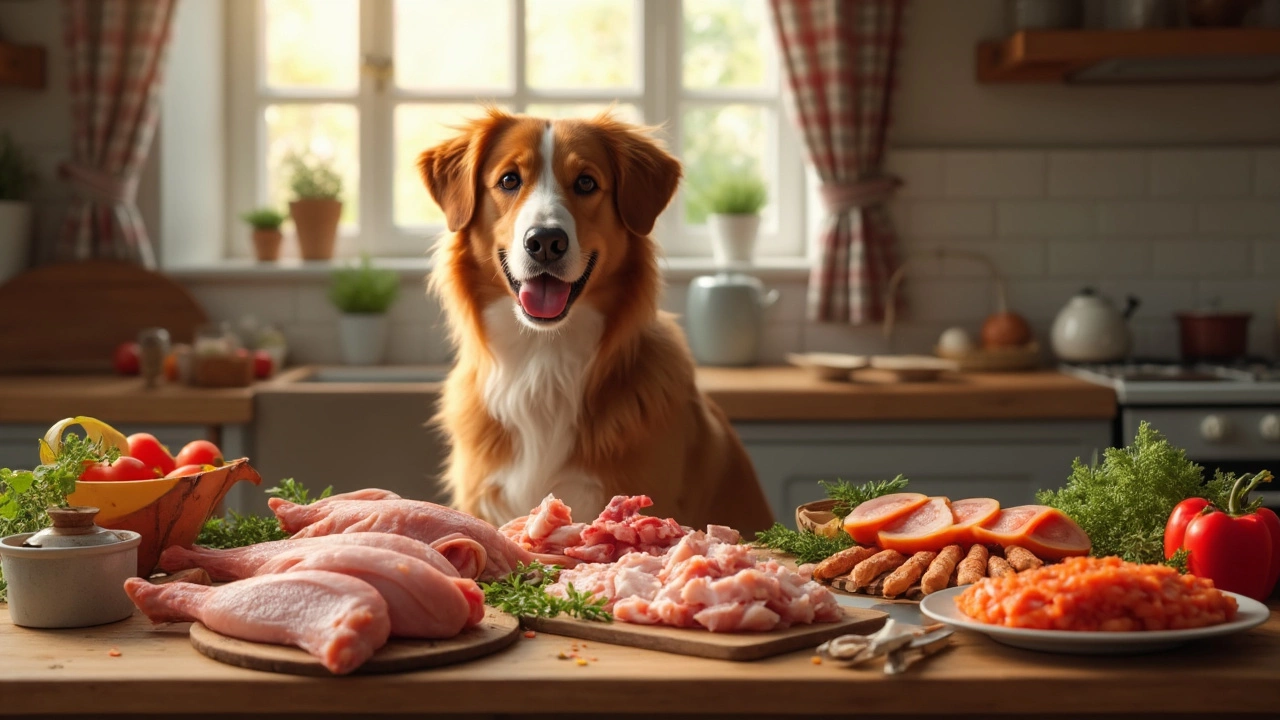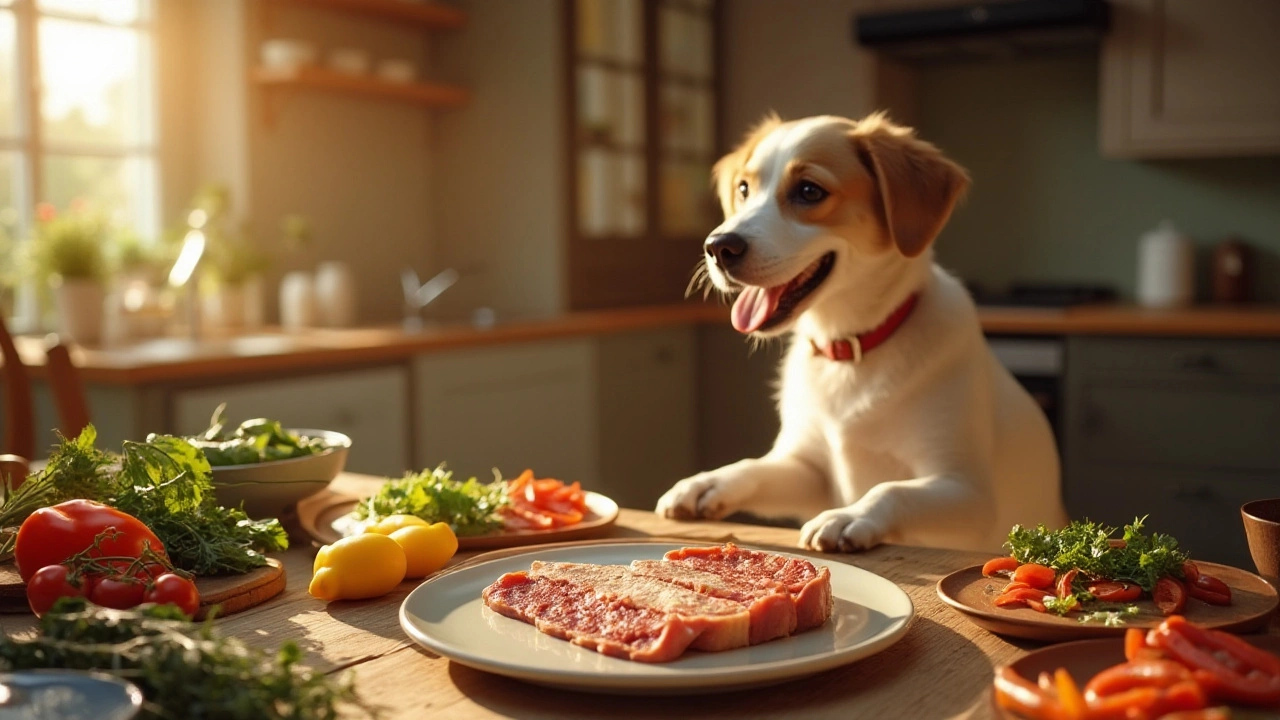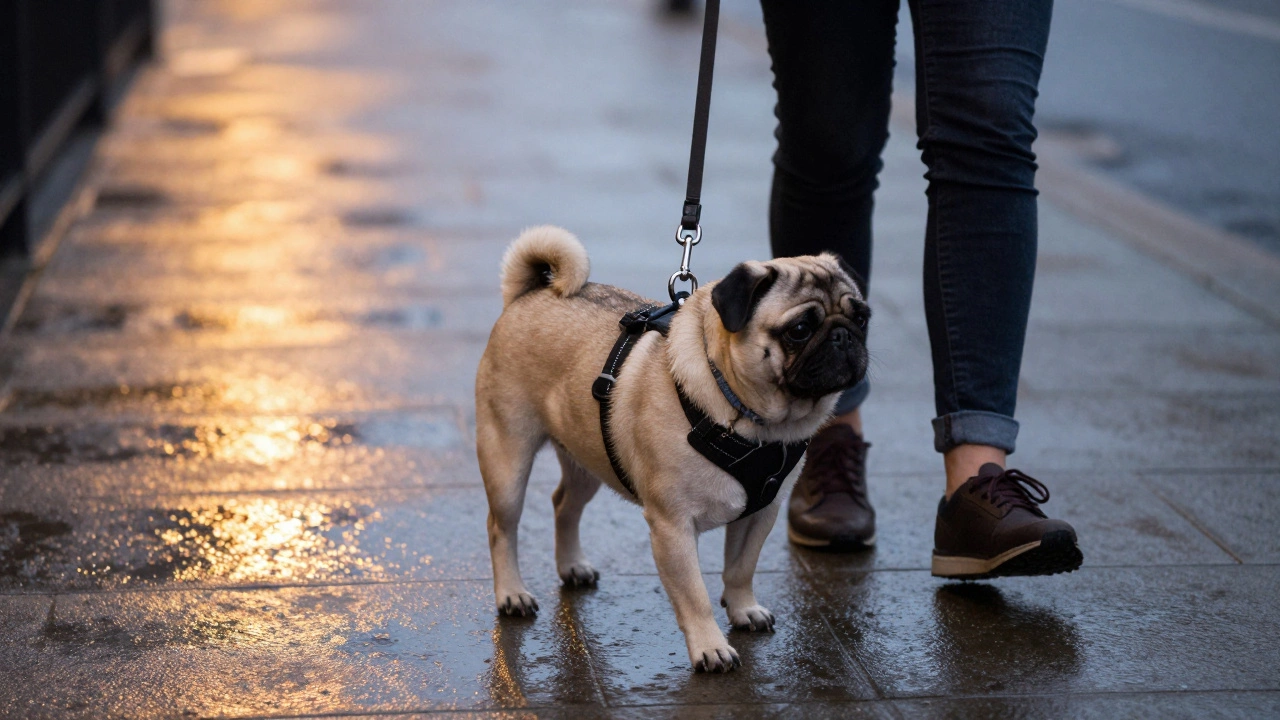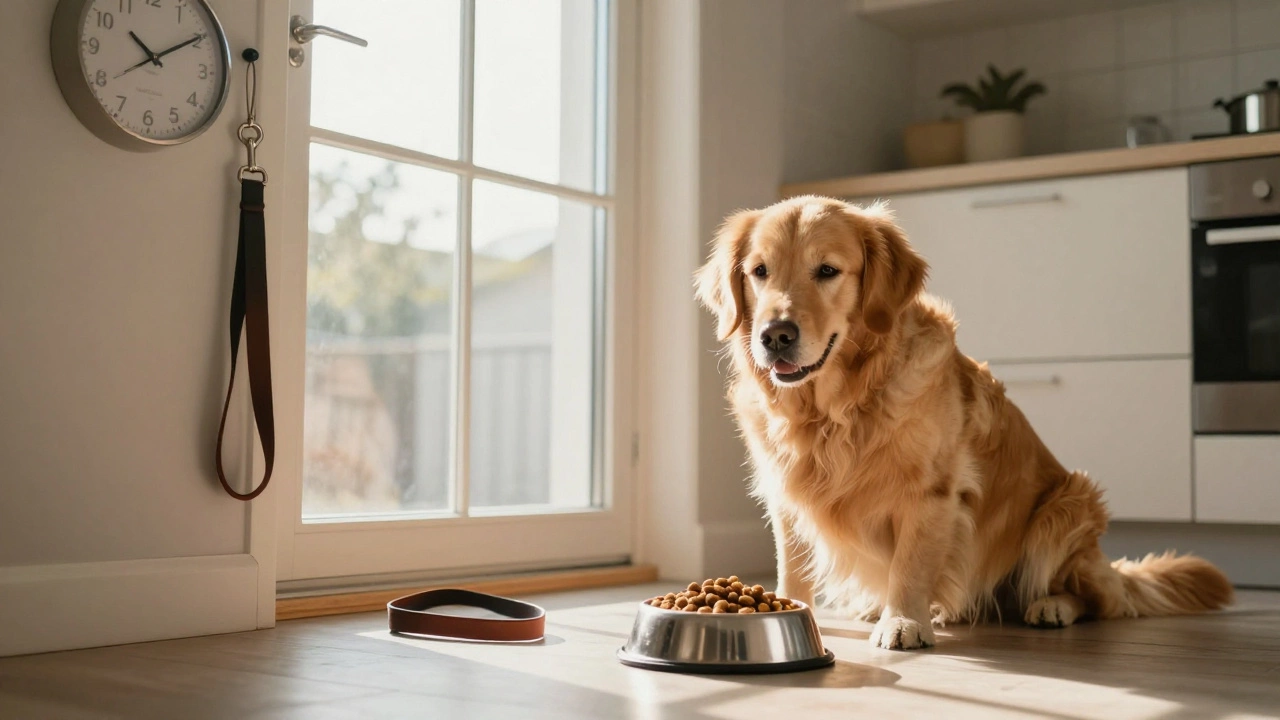Ever check the price tag on a bag of fancy dog food and feel your wallet flinch? You're not alone. The good news: feeding your dog real food doesn’t mean maxing out your credit card. In fact, with a few tweaks to your own grocery list, you can serve up safe, tasty meals Arlo himself would approve of—and still afford coffee next week.
The key is knowing which human foods work for pups, what to skip, and how to piece things together without hiring a canine nutritionist. If you’re sick of reading labels you can’t pronounce or guessing what “meat meal” even is, you’re in the right spot. Let’s talk swaps, scraps, and smart moves so your dog eats well, you save cash, and everyone’s belly (and bank account) is happy.
- Why Real Food for Dogs Is Worth It
- Budget-Friendly Ingredients That Work
- Simple Prep and Smart Storage Hacks
- Balancing Nutrition Without the High Cost
- Mistakes to Avoid and Pro Tips
Why Real Food for Dogs Is Worth It
If you’ve ever wondered why some folks ditch commercial dog meals, here’s the lowdown: real food isn’t just about spoiling your dog—it’s about keeping them healthier, longer. Dogs eating a fresh, balanced diet often have shinier coats, cleaner teeth, better digestion, and more pep in their step. That’s not hype. A 2022 study from Helsinki found dogs on a real food diet showed lower rates of allergies and digestive issues compared to those on dry kibble.
Here’s another thing—prepackaged food isn’t always clear about what’s inside. Take a look at the ingredient list: “meat by-product,” “corn gluten meal,” who knows what those really are? When you feed your pup real food, you see exactly what goes in the bowl. That makes it easier to spot and skip stuff that doesn’t agree with them, like wheat or chicken if your dog’s sensitive.
Plus, you might save cash down the road. How? Fewer trips to the vet for ear infections, skin issues, or upset stomachs. Arlo, for example, used to scratch all the time before switching to food I made in the kitchen—problem solved.
- Less mystery, more control
- Potential for fewer allergies and sensitivities
- Often better coat and dental health
- More energy and improvement in mood
Check out how real food measures up to commercial dog food in this quick table:
| Real Food Diet | Commercial Kibble | |
|---|---|---|
| Ingredients | Whole, fresh foods | Often processed and artificial |
| Cost (Monthly, Average) | $45-$65 | $55-$100 (premium brands) |
| Common Additives | Minimal (if any) | Preservatives, flavorings |
| Risk of Food Sensitivities | Lower | Higher |
Switching to a dog food regimen filled with real, simple ingredients can make a huge difference. You’re not just feeding your dog—you’re investing in their daily (and future) health without blowing your budget.
Budget-Friendly Ingredients That Work
Feeding your dog real food isn’t about chasing superfoods or buying slabs of steak. Simple, affordable items can cover what your dog needs. Plus, you can shop for these while grabbing your usual groceries. The trick is picking stuff that’s cheap, safe, and packs a nutritional punch.
Here are ingredients that fit the bill:
- Chicken: Cheap cuts like thighs or drumsticks (plain, skinless, and cooked well) are solid protein. You can find family packs at most grocery stores for less than half the price of beef.
- Rice: White or brown rice is wallet-friendly and gentle on dog tummies. It’s great for stretching meals and adding bulk.
- Eggs: Packed with protein, they’re affordable and dogs love ’em. Scrambled or hard-boiled works—just skip salt and extra oil.
- Carrots and peas: Whether fresh or frozen, these veggies are low-cost, sweet, and loaded with vitamins. Slice them small for easy chewing.
- Sweet potatoes: Filled with fiber and vitamins, they’re usually cheaper than fancy dog treats and can be cooked in batches.
- Pumpkin (plain, canned): Avoid pumpkin pie mix (that’s full of sugar and spice). Real pumpkin soothes digestion and comes dirt cheap in cans.
- Oats: Rolled oats are easy to cook and make a good grain option for variety and energy.
- Ground turkey: Another protein option—often found for less per pound than beef. Just go for plain, lean turkey.
Compare these prices side-by-side with store-bought dog food and you’ll see why people make the switch:
| Ingredient | Average Price per Pound | Nutrition Benefit |
|---|---|---|
| Chicken thighs | $1.19 | High protein, low fat |
| Rice | $0.70 | Energy, easy to digest |
| Eggs | $2.30/dozen | Protein, amino acids |
| Carrots | $0.80 | Fiber, beta-carotene |
| Sweet potatoes | $1.00 | Vitamins, fiber |
| Pumpkin (can) | $1.50 | Digestion support |
| Oats | $1.00 | Complex carbs |
| Ground turkey | $2.00 | Lean protein |
Keep this in mind: always cook meat thoroughly, skip seasoning, and avoid onions, garlic, grapes, raisins, and chocolate—those are toxic for dogs. If you ever have veggies from last night’s dinner (not drowning in butter or spices), those can often be mixed in too.
Build your dog meals around these basics. Grab what’s on special, check the freezer section, and go bulk when you can. Eating real food on a budget is all about grabbing what’s cheapest that week and keeping it simple.

Simple Prep and Smart Storage Hacks
If you want to feed your dog real food and keep it affordable, the magic is really in how you prep and store meals. Quick batches and solid storage will save you both time and money, turning leftovers and cheap ingredients into healthy chow for your pup without spoilage.
Start by cooking in bulk. If chicken thighs or ground turkey are on sale, grab extra and cook them up at once. Chop or shred the meat (no bones), then mix with cooked veggies like carrots or green beans, and plain rice or oats. Portion out the mix into reusable containers or freezer bags for later. For my dog Arlo, I throw in a little plain pumpkin for fiber, which usually comes cheap, especially in big cans.
The fridge is your friend, but the freezer is your secret weapon. Cooked meals last 3-4 days in the fridge, but will keep for up to 3 months frozen. Label containers with the date so you’re not playing freezer roulette a month from now. For quick snacks or add-ins, you can freeze chopped veggies or cooked sweet potatoes in silicone molds, then pop out pieces as needed.
- Use meal prep containers or even washed takeout containers for storage to skip buying fancy dog food tubs.
- Lay freezer bags flat when freezing meals, so they stack easier and thaw faster.
- Avoid seasoning—dogs don’t need salt or spices, and some common ones like garlic and onion are toxic.
- If you’re adding boiled eggs or sardines, store those separately and add them fresh to servings.
Here’s a quick look at what lasts how long when stored right:
| Food Type | Fridge Life | Freezer Life |
|---|---|---|
| Cooked Meats | 3-4 days | 2-3 months |
| Cooked Veggies | 3-5 days | 2-3 months |
| Cooked Grains (Rice, Oats) | 4-6 days | 3 months |
| Eggs (Hard-Boiled) | 1 week | Not recommended |
| Opened Pumpkin Puree (Canned) | 4-5 days | 3 months |
One last tip—don’t forget portion control. Scoop each day’s meals into containers so you’re not tempted to eyeball things and end up overfeeding your dog, which just means running out early or paying more in the long run. Prep once or twice weekly, freeze what you won’t use in a couple days, and you’ve got a budget-friendly routine even on the busiest schedules.
This kind of smart prep makes the most of your dog food ingredients, keeps things simple, and makes real food feeding totally doable, even when life gets messy.
Balancing Nutrition Without the High Cost
Giving your dog balanced nutrition doesn’t mean you need a science lab or a mile-long shopping list. Dogs thrive on a mix of protein, healthy carbs, and veggies, but you don’t have to drop loads of cash to get there. You just need the right game plan.
Focus on whole foods you’d eat yourself. Lean meats like chicken, turkey, and even beef (on sale or in bulk) are great protein sources. Eggs are budget-friendly and loaded with nutrients. For healthy carbs, brown rice, oats, and sweet potatoes are rock solid and fill your dog’s belly without breaking your budget. Veggie-wise, chopped carrots, green beans, and spinach offer vitamins and fiber, and they’re usually some of the cheapest produce you can buy.
Here’s a simple way to make sure your dog is getting what they need:
- Shoot for about 40-50% protein (think cooked meats or eggs).
- Add 30-40% carbohydrates (like rice or sweet potato).
- Toss in 10-20% veggies (chopped, steamed, or even raw).
Don’t skip a small splash of healthy fats, like a bit of olive oil or fish oil once or twice a week. This helps with coat health and makes dinner taste better. If you’re using a lot of home-cooked meals, consider a basic canine multivitamin or a sprinkle of ground eggshell for calcium.
Watch out for big ‘no-no’ foods: onions, garlic, grapes, chocolate, cooked bones, and anything super salty. These are toxic for dogs. Stick with safe basics and try batch prepping meals to save both time and money—leftovers freeze well for busy days.
Balancing a dog food diet at home might look tricky at first, but most pups do great with variety, as long as you keep portions sensible and ingredients clear. If you want to go the extra mile, there are free online calculators for homemade dog meal ratios. And if you ever feel out of your depth, a quick chat with your vet will clear things right up.
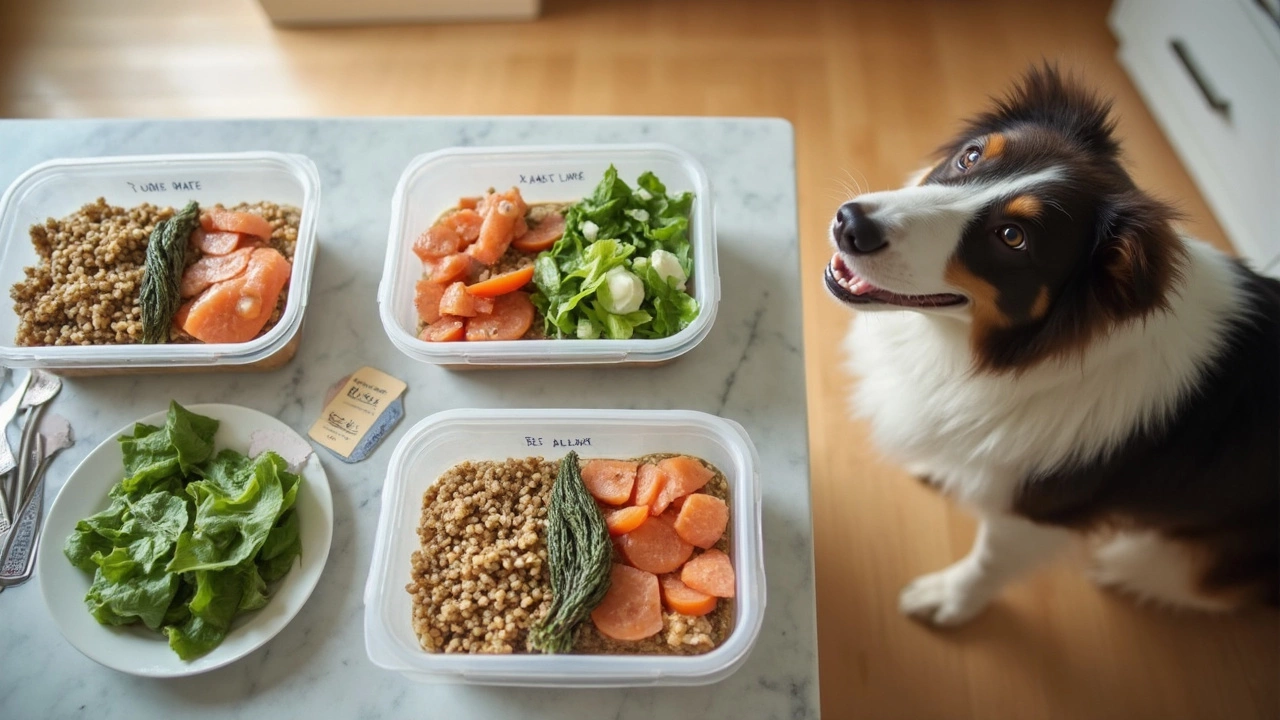
Mistakes to Avoid and Pro Tips
Trying to feed your dog real food on a budget sounds simple, but there are some tripwires. If you skip a few details or go full chef with the wrong foods, you can end up causing more harm than good—both for your wallet and your pup’s health.
Here are some straight-up mistakes I’ve seen folks make (yep, I’ve done a few, too):
- Skipping Balanced Meals: Dogs need the right combo of protein, carbs, fats, vitamins, and minerals. Don’t just toss them some chicken; add rice, veggies like carrots, or even a dollop of plain pumpkin. Unbalanced home diets can lead to deficiencies or even overweight pups.
- Using Ingredients That Aren’t Dog-Safe: Never give dogs onions, garlic, grapes, raisins, chocolate, or xylitol (usually found in sugar-free stuff). Even small amounts can be toxic. Stick to foods you know are safe.
- Guessing Portion Sizes: Too much food and you get a chubby friend. Too little, and they’ll be hungry (or undernourished). A good rule: Most adult dogs should get 2-3% of their body weight in food per day. For example, a 50-pound dog needs about 1–1.5 pounds of food daily.
- Not Factoring In Age and Activity: Puppies, seniors, couch potatoes, and adventure hounds all have different needs. Timid eaters and playful destroyers like Arlo definitely burn calories faster. Adjust batches based on your dog’s lifestyle.
- Forgetting Dynamic Pricing: Sometimes, what’s affordable one week (like chicken thighs) will be overpriced the next. Swap in deals like turkey, eggs, or canned fish in water when prices shift.
Want to know some tricks that actually work? Try these:
- Buy proteins in bulk when they’re on sale. Portion and freeze so nothing goes to waste.
- Use a mix of carb sources: Brown rice, oats, and sweet potatoes give you options—each with different nutrients.
- Blend tiny amounts of organ meats (like beef liver) into meals. Packed with vitamins, but strong flavor, so start slow.
- Go for flash-frozen veggies—cheaper and last longer than fresh greens.
- Keep a batch log: Write down what ingredients you used, how your dog liked it, and any changes (itchy skin, more energy, weird stools). Patterns show up fast.
If you want a quick cheat sheet, here’s a dog-safe and unsafe food guide, plus a look at what prepping at home could cost compared to store-bought dog food:
| Safe Foods | Unsafe Foods | Prep at Home (avg. per lb) | Premium Kibble (avg. per lb) |
|---|---|---|---|
| Chicken, turkey, beef, eggs, brown rice, carrots, green beans, pumpkin, apples (no seeds) | Onions, garlic, chocolate, xylitol, grapes, raisins, cooked bones | $1.15–$2.20 | $3.00–$5.50 |
Bottom line: Keep a running grocery list, track sales, and make friends with your local butcher. Your dog (and wallet) will thank you.


